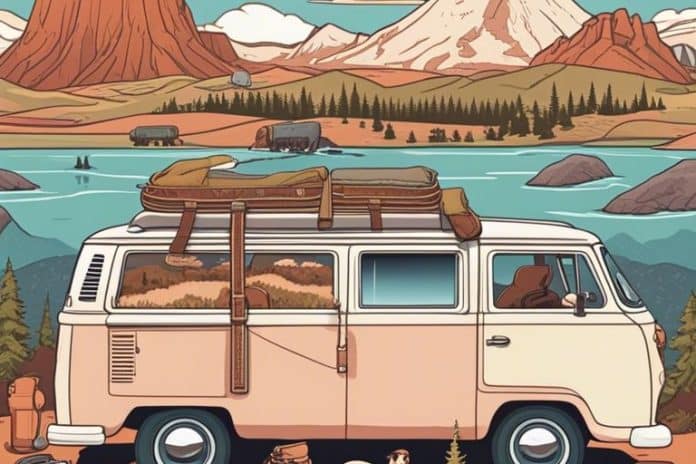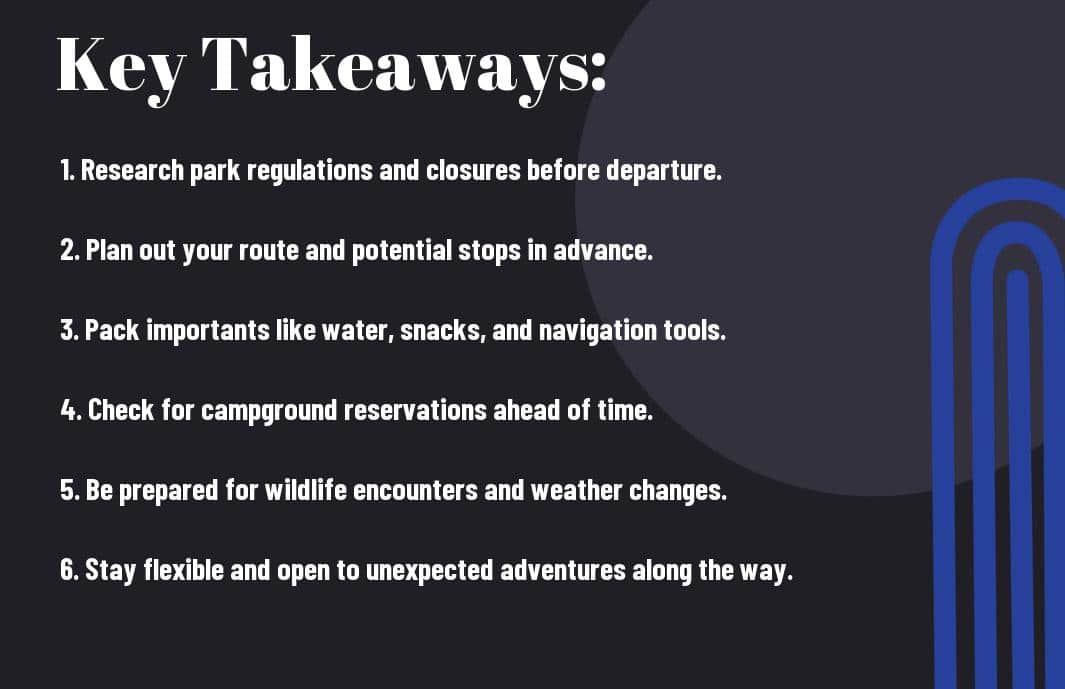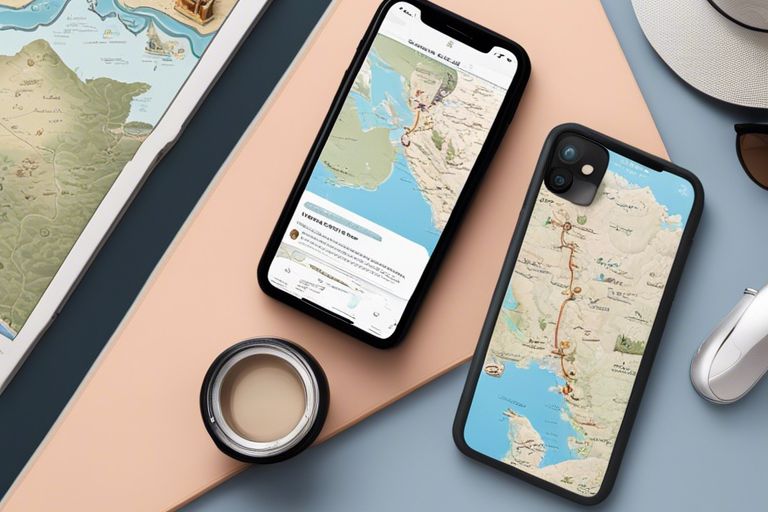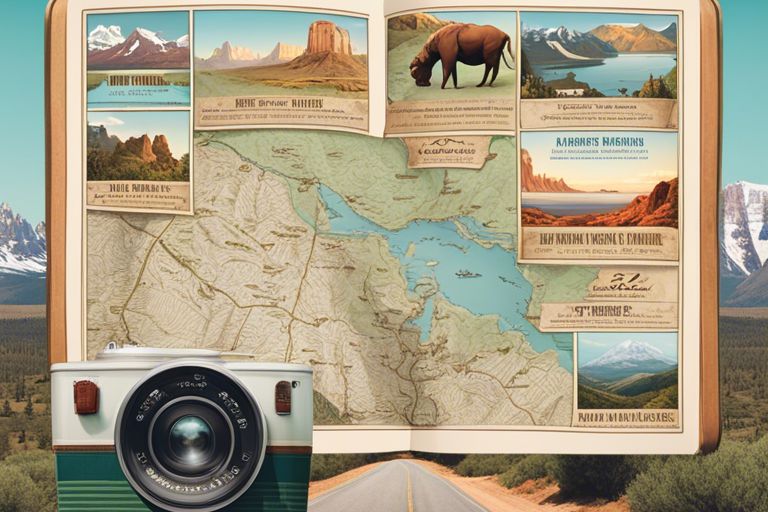Just launching on a road trip to explore the vast wonders of national parks can be an exhilarating adventure. However, ensuring a smooth and unforgettable journey requires careful planning and preparation. From navigating diverse terrains to encountering wildlife, proper planning is important to maximize enjoyment and safety. Discover the top tips to plan a national park road trip seamlessly, including selecting the right parks, packing importants, and understanding park regulations. Stay ahead of potential challenges and make the most of your exploration with these expert tips tailored for an unforgettable national park road trip experience.
Key Takeaways:
- Research is key: Plan ahead and research the national parks you want to visit, including their locations, hours of operation, and any entry fees.
- Make a detailed itinerary: Create a detailed itinerary that includes driving routes, camping or lodging options, and activities to do at each national park.
- Be prepared for the unexpected: Pack vitals such as water, snacks, a first aid kit, and extra clothing in case of unexpected weather changes.
- Respect wildlife and nature: Follow park rules and regulations, stay on designated trails, and never approach or feed wild animals.
- Stay connected: Keep a map, GPS, and cell phone handy for navigation and emergency purposes, as some national parks may have limited cell service.
- Consider the time of year: Take into account the weather and crowd levels when planning your national park road trip, as some parks are busier during peak seasons.
- Leave no trace: Practice Leave No Trace principles by properly disposing of trash, respecting wildlife habitats, and leaving the natural environment as you found it.
Choosing the Right National Park for Your Trip
Evaluating Park Locations and Distances
Before launching on your national park road trip, it is crucial to evaluate the locations of the parks you are considering and the distances between them. Take into account the driving time and the routes to each park to ensure you can fit all your desired destinations into your itinerary.
Considering the Best Time to Visit
Best time to visit a national park can greatly impact your experience. Consider factors like weather conditions, crowd levels, and wildlife sightings when choosing your travel dates. The summer months may offer warmer weather but higher visitation, while spring and fall can provide pleasant temperatures and fewer crowds.
The Best Time to Visit
The timing of your visit can also affect the availability of certain activities, such as hiking, camping, or wildlife viewing. Be sure to research each park’s peak seasons and any road closures or construction that may impact your trip. Early mornings and weekdays are often the best times to enjoy popular attractions without the crowds.
Preparing for the Journey
Road Trip Essentials Checklist
Some of the most important aspects of planning a national park road trip involve preparation and organization. Before hitting the road, it’s crucial to ensure you have all the crucials in check to guarantee a smooth and enjoyable journey.
Vehicle Maintenance and Safety Tips
Journey
Ensuring your vehicle is in top condition is paramount when launching on a national park road trip. Regular maintenance checks, including oil levels, tire pressure, brakes, and lights, are crucial for vehicle safety. Prioritize this before setting off to avoid any unforeseen issues along the way.
- Check oil levels
- Monitor tire pressure
- Inspect brakes and lights
Perceiving any potential problems early can help prevent breakdowns and keep you safe during your journey.
Vehicle Maintenance and Safety Tips
Road
Another crucial factor to consider is the overall safety of your vehicle. Conducting a thorough inspection, especially if your vehicle is not regularly used for long trips, can highlight any potential dangerous issues that need addressing. This could include checking the engine, coolant levels, and spare tire condition to ensure you are well-prepared for any situation on the road.
- Inspect engine and coolant
- Check spare tire condition
Perceiving the importance of regular vehicle maintenance and safety checks can make a significant difference in the success and enjoyment of your national park road trip.
Accommodation and Logistics
Camping vs. Lodging inside National Parks
Your choice between camping and lodging inside national parks can greatly impact your overall experience. Camping allows you to immerse yourself in nature, waking up to breathtaking views just a few steps from your tent. On the other hand, staying in lodges provides more comfort and amenities, perfect for those looking for a comfortable retreat after a day of exploring. Consider the logistics of your trip, your budget, and your preferences when deciding between camping and lodging inside national parks.
Reservations and Permits
Logistics play a crucial role in ensuring a smooth national park road trip. Reservations for camping sites, lodges, or backcountry permits are crucial, especially during peak seasons when these accommodations tend to fill up quickly. Make sure to plan ahead and secure your reservations well in advance to avoid any last-minute disappointments. Additionally, some parks require permits for specific activities such as backcountry camping or hiking certain trails. Check the park’s official website for details on permits and regulations to ensure a hassle-free trip.
Activities and Itinerary Planning
Once again, if you are looking to plan an epic road trip to the national parks, you can find more tips on how to do so in my detailed guide on How To Plan A National Parks Trip in the USA.
Must-See Attractions and Hidden Gems
Any national park road trip should include a mix of must-see attractions and hidden gems to truly experience the diversity and beauty the parks have to offer. From iconic landmarks like the Grand Canyon and Yellowstone to lesser-known treasures like Capitol Reef National Park and Great Basin National Park, exploring these hidden gems can provide a unique and unforgettable experience.
Aligning Activities with Fitness Levels and Interests
Levels of fitness and personal interests can vary greatly among travelers begining on a national park road trip. It is crucial to align your activities with your fitness level to ensure a safe and enjoyable experience. Whether you prefer leisurely walks to admire scenic views or challenging hikes to remote locations, it is imperative to tailor your itinerary to match your physical abilities and interests. It is also important to consider the elevation and terrain of each park, as some may present more strenuous challenges than others.
Responsible and Sustainable Travel
Leave No Trace Principles
One key aspect of responsible traveling in national parks is to adhere to the Leave No Trace principles. This means minimizing your impact on the environment by practicing proper waste disposal, staying on designated trails, respecting wildlife, and leaving natural objects undisturbed. By following these principles, you can help preserve the beauty and integrity of the national parks for future generations to enjoy.
Supporting Local Communities
An important way to practice sustainable travel is by supporting local communities near national parks. When planning your road trip, consider staying in locally-owned accommodations, dining at local restaurants, and buying souvenirs from local shops. This not only helps boost the local economy but also allows you to connect with the culture and people who call these areas home.
Plus, by supporting local communities, you are contributing to the preservation of these areas as residents have a vested interest in protecting their environment. This creates a symbiotic relationship where both locals and travelers benefit.
Navigating Challenges
Dealing with Weather and Seasonal Closures
Many challenges can arise when planning a national park road trip, with weather and seasonal closures being common obstacles to navigate. Closures due to inclement weather, such as snow or flooding, can unexpectedly disrupt your itinerary. It is necessary to stay informed about weather forecasts and park alerts to adjust your plans accordingly. Most parks have specific seasons where certain roads or facilities are closed for safety reasons, so be sure to check ahead and plan your visit during optimal times.
Wildlife Encounters and Safety
Many national parks are home to a diverse range of wildlife, offering the opportunity for unforgettable Encounters with animals in their natural habitats. However, it is crucial to practice caution and respect when observing wildlife to ensure both your safety and theirs. Be sure to maintain a safe distance, never feed the animals, and follow all park guidelines. In the event of a wildlife encounter, remain calm, back away slowly, and do not turn your back on the animal.
Seasonal variations in wildlife behavior can also impact your road trip experience. Be aware of mating seasons, hibernation periods, or migration patterns that may increase the likelihood of wildlife sightings. While encounters with animals can be breathtaking, it is necessary to prioritize safety and avoid disrupting their natural behaviors.
Capturing Memories
Photography and Journaling Tips
Despite the convenience of smartphones, bringing a DSLR camera is vital to capture the stunning landscapes and wildlife in national parks. Utilize natural lighting during sunrise and sunset for breathtaking photos. Don’t forget to pack a journal to document your thoughts and experiences during the trip. After all, these memories are worth immortalizing.
- Bring a DSLR camera for high-quality images
- Utilize natural lighting for breathtaking photos
- Carry a journal to document experiences
Utilizing Technology for Memory-Making
Technology can enhance your memory-making experience during a national park road trip. Utilize GPS apps to navigate through the expansive parks and ensure you don’t miss out on key landmarks. Another useful tip is to download offline maps in case of limited connectivity, ensuring you can access maps even in remote areas. Keep your devices charged with portable chargers to avoid missing out on capturing memorable moments.
Another important aspect is storing your photos and memories safely. Use cloud storage services to back up your photos and journal entries, protecting them from loss or damage. Embrace technology to enhance your road trip memories and ensure they last a lifetime.
Conclusion
Ultimately, planning a road trip to visit national parks requires careful consideration and strategic planning. By following the top tips provided in this guide, such as researching park regulations, packing importants, and scheduling enough time for each destination, travelers can ensure a smooth and enjoyable journey. Remember to prioritize safety, respect the environment, and embrace the adventure of exploring these breathtaking natural wonders. Happy travels!
FAQ
Q: What are the important things to consider when planning a national park road trip?
A: When planning a national park road trip, it is important to consider factors like the best time to visit, the distance between parks, camping or accommodation options, park regulations, weather conditions, and activities available at each park.
Q: How can I create an itinerary for a national park road trip?
A: To create an itinerary for a national park road trip, start by researching the parks you want to visit, make a list of must-see attractions, plan driving routes between parks, allocate time for hiking and exploring, and consider the duration of your trip to ensure you have enough time at each park.
Q: What are some tips for making the most of a national park road trip?
A: To make the most of a national park road trip, consider visiting lesser-known parks to avoid crowds, pack important items like food, water, hiking gear, and maps, respect wildlife and park rules, take breaks to rest and enjoy the scenery, and be prepared for unexpected weather changes or emergencies.




